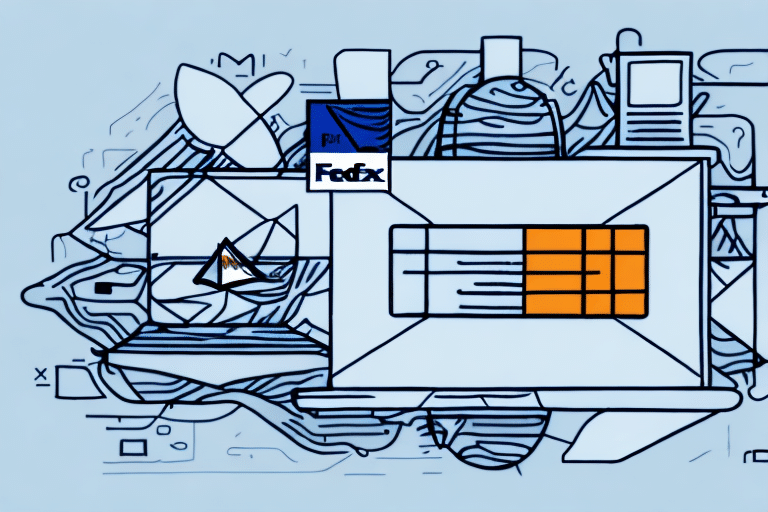What Are UPS Peak Surcharges?
UPS peak surcharges are additional fees imposed by UPS during periods of high shipping demand, such as the holiday season or major sales events. These surcharges are added to the standard shipping rates to help UPS manage increased logistical challenges and maintain reliable delivery services. Factors influencing these surcharges include package weight and size, destination ZIP code, and the chosen shipping service.
Reasons Behind UPS Peak Surcharges
Managing Increased Demand
During peak seasons, the volume of packages increases significantly, putting a strain on UPS's resources. Surcharges help manage this surge by encouraging customers to spread out their shipments.
Offsetting Operational Costs
Higher demand requires UPS to invest in additional staff, transportation, and warehousing. Peak surcharges help offset these increased operational costs.
Ensuring Service Reliability
By implementing surcharges, UPS can maintain timely deliveries and uphold service standards despite the heightened demand.
How UPS Calculates Peak Surcharges
UPS employs a multifaceted approach to calculate peak surcharges, considering:
- Time of Year: Surcharges are higher during peak seasons like holidays.
- Package Specifications: Weight and size significantly impact the surcharge amount.
- Destination: Shipping to certain ZIP codes may incur higher surcharges due to logistical challenges.
- Service Type: Expedited services often carry higher surcharges compared to standard shipping.
Some surcharges are fixed amounts, while others are a percentage of the base shipping rate.
The Impact of UPS Peak Surcharges on Your Business
Financial Implications
Peak surcharges can significantly affect a business's bottom line by increasing shipping costs during high-demand periods. It is crucial for businesses to account for these additional expenses in their budgeting and pricing strategies.
Operational Challenges
Unexpected surcharges can disrupt cash flow and operational planning. Businesses must adapt by optimizing their shipping schedules and exploring cost-effective alternatives.
Strategies for Managing UPS Peak Surcharges
Negotiate Better Rates
Businesses with high shipping volumes can negotiate with UPS for more favorable rates during peak periods. Establishing a strong relationship with UPS representatives can lead to customized pricing plans.
Optimize Shipping Practices
- Consolidate Shipments: Combining multiple orders into a single shipment can reduce the number of surcharges incurred.
- Adjust Shipping Schedules: Plan shipments for off-peak times to avoid higher surcharges.
- Use Shipping Software: Implementing shipping software can help compare rates and select the most cost-effective options.
Explore Alternative Carriers
Consider using other shipping carriers like USPS or FedEx, which may offer different surcharge structures or more competitive rates during peak periods.
Comparison of UPS Peak Surcharges with Other Shipping Companies
While UPS is a major player in the shipping industry, it's essential to compare its peak surcharges with those of competitors:
- USPS: Offers flat-rate shipping options that can be more cost-effective for certain package types.
- FedEx: Implements its own set of peak surcharges, which may vary based on service level and destination.
Evaluating these options ensures that businesses choose the most economical and efficient shipping solutions.
The Future of UPS Peak Surcharges and Shipping Costs
As e-commerce continues to expand, peak shipping periods are likely to become more intense, potentially leading to sustained or increased peak surcharges. However, advancements in technology, such as automation and artificial intelligence, may offer new ways to enhance shipping efficiency and mitigate surcharge impacts.
Additionally, the growing focus on sustainability could influence UPS's pricing structures. Businesses prioritizing eco-friendly shipping methods may benefit from incentives or reduced surcharges as UPS adopts more sustainable practices.
Case Studies: How Businesses Handle UPS Peak Surcharges
Online Jewelry Retailer
A small online retailer specializing in handmade jewelry faced significant UPS peak surcharges during the holiday season, impacting profit margins. To address this, the business implemented free shipping for orders over a certain amount, encouraging larger purchases. Additionally, they negotiated better rates with UPS for bulk shipments, helping maintain profitability despite higher surcharges.
Tech Gadgets E-commerce Store
An e-commerce store selling tech gadgets optimized their shipping by consolidating orders and scheduling shipments during off-peak periods. They also integrated shipping software from ShipScience to compare rates across different carriers, ultimately reducing their overall shipping costs and minimizing the impact of UPS peak surcharges.
Expert Opinions on UPS Peak Surcharges
Industry analysts emphasize the importance of strategic shipping management to mitigate surcharge impacts. According to a report by UPS Industry Reports, businesses that proactively adjust their shipping practices and leverage technology solutions tend to navigate peak surcharges more effectively.
Consultants also recommend diversifying shipping carriers and maintaining flexibility in shipping schedules to enhance resilience against fluctuating surcharges.






















